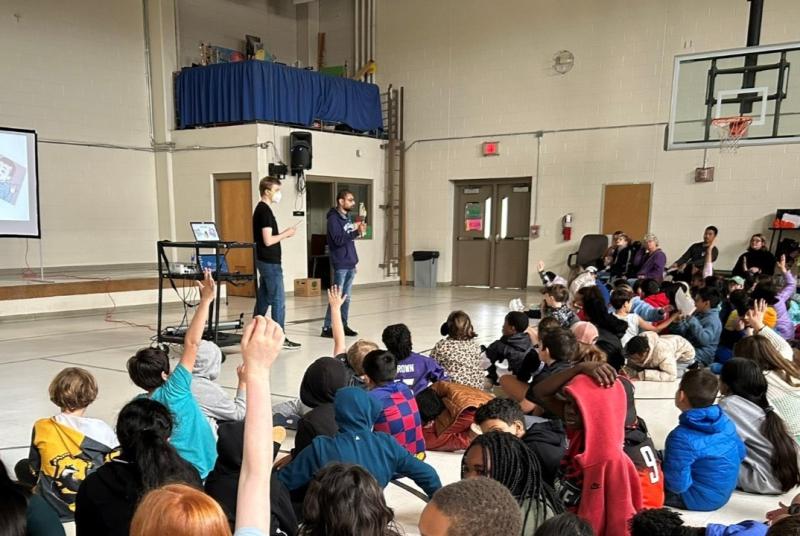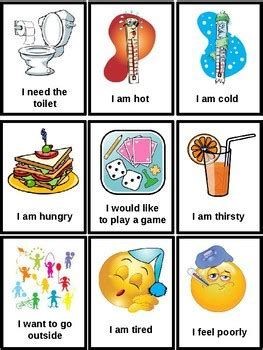
Like all children, autistic students benefit from a welcoming school environment. Having classmates who understand autism – especially the sensory and communication differences that can come with autism – can go a long way towards creating a sensory-friendly classroom, reducing bullying, and helping autistic children enjoy school.
With this goal in mind, Duke Center for Autism and Brain Development staff members Sam Brandsen, PhD, and Raghav Swaminathan recently visited Forest View Elementary School in Durham to share their expertise and experience. They spoke to groups of third and fourth grade students about neurodiversity, with particular attention to sensory processing differences.
Sensing and Communicating Differently
As Sam and Raghav explained to the students, many autistic children have differences in sensory processing. For example, a sound that may be unremarkable to most people might feel very loud to an autistic child. Sam and Raghav discussed the five senses, explaining how each person has a unique way of processing sensory information.
A person may have sensitivities in one or more sense that impacts how they interact with the world. People may seek out or avoid certain textures, lights, sounds, physical movements, smells, or even flavors, based on how they process sensory input.
To illustrate how people can experience the same thing differently, Sam and Raghav showed a picture representing how colorblindness affects a person’s perception of the same image (see image below).

While colorblindness is not directly related to autism, this graphic offered a visual representation of a sensory processing difference that helped the children understand this concept.
In addition to sensory processing differences, many autistic individuals communicate differently than their peers. Sam and Raghav discussed the importance of trying to understand the reason behind a classmate’s behavior instead of making assumptions. For example, a classmate might make less eye contact because it helps them focus, rather than because they are not interested in a conversation.
They also showed students different types of augmentative and alternative communication (AAC) devices that help some autistic people communicate.

Autistic children also might be able to focus better if they are able to fidget or self-stimulate (“stim”) by using repetitive movements. Sam and Raghav brought examples of fidget toys designed to facilitate this activity.

Curiosity Sparks Discussion & Understanding
The children asked questions about what it’s like to have autism. Some shared their own experiences with the five senses. One child expressed that they really enjoyed the feeling of putting their hands in the sand, while another child disliked that. They discussed foods that they like and dislike due to flavor or texture. Even among this small group, they could see diversity in their sensory experiences.
The children asked about how to make friends and what friendship looks like with someone whose experience of the world is different from your own. Sam’s and Raghav’s answers to these questions focused on the positive aspects of having different perspectives, what they enjoyed about school, and finding friends. A discussion of favorite sports teams revealed that you can always find something in common with a new friend.
“I enjoyed getting to meet the 3rd and 4th graders and getting to talk to them about what it’s like having autism. I hope we can go to more schools and talk about this.” – Raghav Swaminathan
The presentation encouraged the children to understand and appreciate different perspectives among their classmates. While Sam and Raghav specifically addressed the differences of neurodivergent and autistic people, they emphasized that understanding others’ perspectives applies to any differences between people. Creating a welcoming, sensory-friendly environment starts with understanding differences without judgement, and then providing helpful tools and accommodations.
Sam and Raghav continue this series with a visit to Little Hikers Preschool in June, and hope to give the presentation at more schools later this year.